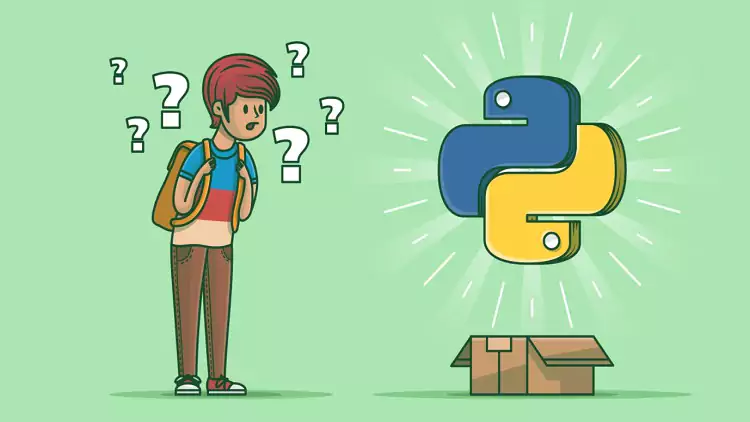
In 2023, as we continue to rely on technology in our daily lives, learning a programming language has become more relevant than ever before. Programming skills are invaluable if you want to boost your career, create your own projects, or simply keep up with the evolving digital landscape. Among the plethora of languages to choose from, Python consistently stands out as an excellent choice for beginners and seasoned professionals alike.

✅ AI Essay Writer ✅ AI Detector ✅ Plagchecker ✅ Paraphraser
✅ Summarizer ✅ Citation Generator
Python is celebrated for its simplicity, readability, and versatility. From web development and data analysis to artificial intelligence and automation, it is an integral part of numerous high-demand industries. This article will guide you through the best ways to learn this programming language and introduce you to a variety of resources that cater to different learning styles and goals.
Key Takeaways:
- Python, known for its simplicity and versatility, can be learned through diverse resources catering to various learning styles, objectives, and budgets.
- Free resources like Codecademy, SoloLearn, and Google’s Python Class provide accessible, foundational knowledge, ideal for beginners or casual learners.
- Paid platforms like DataCamp, Udemy, and Pluralsight offer structured, in-depth courses with instructor support, suitable for those seeking advanced Python skills for professional development.
Choosing Your Learning Path: Free vs. Paid Methods
The availability of both free and paid learning resources for Python is abundant, catering to a wide range of learners with diverse needs, goals, and budgets. Free resources, such as online tutorials, video lectures, and interactive courses, provide an accessible and cost-effective way for beginners to explore Python and build a foundation in programming. These options are particularly appealing to students, hobbyists, or professionals who are curious about the language but may not be ready to commit financially.
On the other hand, paid resources, which include comprehensive courses, books, and professional certifications, offer a more structured and in-depth learning experience. These options are ideal for those who are dedicated to mastering Python and require additional support, resources, or features to achieve their goals. By understanding the advantages and drawbacks of both free and paid resources, learners can make informed decisions and tailor their Python learning journey to their specific needs and objectives.
Free Learning Options: The Best Way to Start
Free learning resources offer a risk-free and accessible way to explore Python, making them perfect for beginners, students, hobbyists, and professionals testing the waters. Some popular free learning resources include:
Codecademy’s Learn Python Track. This comprehensive and interactive course covers Python basics, control flow, functions, and more. The hands-on approach enables you to practice coding within the platform, receiving instant feedback and guidance. By working through a series of modules, you’ll gain a solid foundation in Python programming, while also developing problem-solving skills. The platform offers progress tracking and additional practice exercises, ensuring a well-rounded learning experience.
SoloLearn’s Python Course. This mobile app-based course teaches Python fundamentals through quizzes and exercises that reinforce learning. The app’s community feature connects you with fellow learners, allowing you to ask questions and share insights. Designed for on-the-go learning, SoloLearn makes it easy to study Python whenever you have spare time. The bite-sized lessons and engaging interface make it an appealing option for those who prefer learning in short, focused sessions.
Google’s Python Class. Developed by Google, this class consists of text-based lessons accompanied by videos and practical exercises. The course covers essential topics such as strings, lists, dictionaries, and file handling. Although designed for people with some programming experience, complete beginners can also benefit from the course by working through the material at their own pace. With a strong emphasis on practice, this course provides a practical introduction to Python programming, enabling learners to apply their knowledge to real-world situations.
Coursera’s Python for Everybody: Offered by the University of Michigan, this course is part of the Python for Everybody Specialization. Taught by Dr. Charles Severance, the course focuses on fundamental programming concepts and their applications using Python. Topics covered include variables, expressions, conditional statements, functions, and data structures. While the course is free to audit, obtaining a certificate requires payment. With peer-reviewed assignments, quizzes, and a supportive community, this course offers a well-rounded and academically rigorous introduction to Python programming.
Pros and Cons of Free Learning Resources
| Pros | Cons |
| No financial commitment | Limited structure and depth |
| Accessible to a wide audience | Limited support |
| Ideal for beginners | Varying quality |
| Low-risk exploration | May require multiple resources |
Paid Options: When and Why
Transitioning to paid options can be beneficial once you’ve grasped the basics of Python and are ready to tackle more specialized or advanced topics. Paid resources often provide a more structured learning experience, access to instructor support, and in-depth content that may not be available for free. Some popular paid options include:
DataCamp. DataCamp provides a subscription-based platform featuring Python courses specifically designed for data science and analytics enthusiasts. With an emphasis on practical, hands-on learning, DataCamp caters to individuals eager to apply Python in data-driven fields. The platform offers a variety of courses, ranging from beginner to advanced levels, along with interactive coding exercises and real-world projects, allowing learners to hone their skills and gain practical experience.

Udemy. Udemy boasts a diverse selection of Python courses, encompassing various topics such as web development, machine learning, and data analysis. As a platform that offers lifetime access to purchased courses, Udemy is an attractive option for learners who prefer self-paced study, enabling them to revisit course content as needed. Additionally, Udemy courses often include quizzes, assignments, and projects, providing a well-rounded learning experience for students at different skill levels.
Coursera and edX Specializations or Professional Certificates. Both Coursera and edX offer paid Python specializations and professional certificate programs, frequently in partnership with top-tier universities. These programs deliver a more comprehensive and structured learning experience, including a series of interconnected courses that build on one another. As a result, these platforms are well-suited for individuals seeking to enhance their credentials, gain expertise in a particular domain, or even make a career shift.
Pluralsight. Pluralsight operates as a subscription-based platform, boasting an extensive library of Python courses that cover a broad spectrum of topics from beginner to advanced levels. In addition to its wide range of courses, Pluralsight also provides skill assessments and learning paths, allowing professionals to create a customized learning experience that aligns with their career goals. This feature makes Pluralsight an ideal choice for individuals looking to advance their skills, stay current with industry trends, or transition into new roles within the tech sector.
Paid options generally offer more value to learners by providing structured and in-depth content, instructor support, and additional features like quizzes, projects, or certificates. However, they are not without their imperfections. The financial investment required may not be suitable for casual learners, students, or those on a tight budget. Moreover, paid resources might be less accessible for certain individuals, and the commitment required to make the most of these resources can be daunting for some. Despite these shortcomings, paid options remain an excellent choice for dedicated learners who are willing to invest in their education and seek a comprehensive understanding of Python for professional or personal growth.
Pros and Cons of Paid Learning Resources
| Pros | Cons |
| Structured and in-depth content | Financial investment |
| Instructor support | Not ideal for casual learners |
| Additional features (quizzes, projects, etc.) | Commitment required |
| Quality and consistency | Less accessibility |
As you see, both free and paid options have their merits and can be combined to create a tailored learning experience. Starting with free learning resources can help you build a foundation in Python, while paid alternatives can offer more advanced knowledge, structure, and support as you progress in your learning journey.
Conclusion
Learning Python can open up a world of doors in today’s technology-driven landscape. By carefully selecting the right resources based on your learning style and goals, you can set yourself up for success and become a proficient Python programmer. With the wide variety of free and paid resources available, there’s never been a better time to start your Python journey than 2023. Dive in and explore your opportunities today!
Related stories:
Bachelors or Bootcamp – Choosing the Right Path for Aspiring Coders
Discover Python: The Perfect Starting Point for Coding Beginners
How to Become a Full Stack Developer: A Comprehensive Guide
Java and JavaScript: A Comparative Analysis of Two Distinct Programming Languages
Follow us on Reddit for more insights and updates.





Comments (0)
Welcome to A*Help comments!
We’re all about debate and discussion at A*Help.
We value the diverse opinions of users, so you may find points of view that you don’t agree with. And that’s cool. However, there are certain things we’re not OK with: attempts to manipulate our data in any way, for example, or the posting of discriminative, offensive, hateful, or disparaging material.